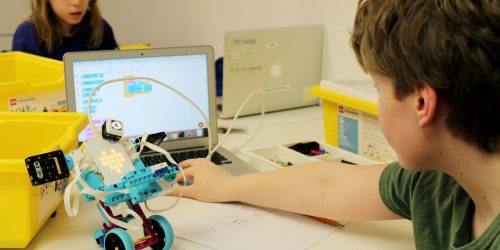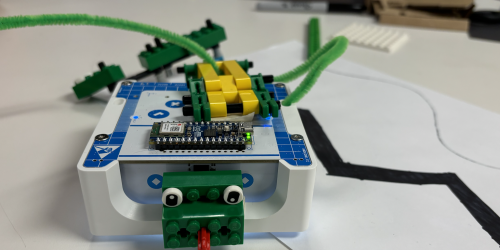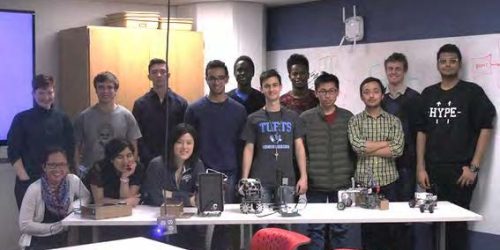by Matt Mueller, Doctoral Student in Mechanical Engineering
Hello, my name is Matthew Mueller and I am a PhD student in Mechanical Engineering interested in simplifying interfaces for digital fabrication tools (like 3D printers and CNC machines) and developing ways for young students to engage in authentic engineering design. As part of the 2016/2017 CEEO Innovation grant, David Alsdorf and I have created the MakerGames, a game designed to leverage the power of make believe play and to spark thoughtful conversations about engineering concepts as students engage in open ended design challenges.
 To start the activity, the facilitator introduces the group to the engineering design challenge that they will be working on as they play the game. The game is then introduced to the students and the facilitator sets the length of each team’s turn at the board depending on the number of teams and the length of the activity. Each side of the game board represents a traditional step in the engineering design process (frame, make, evaluate, and share). There are four tiles on each side with unique prompts that encourage storytelling to help frame the problem, bring attention to the material constraints in the building process, guide evaluation of prototypes, or facilitate sharing with marketing-type activities.
To start the activity, the facilitator introduces the group to the engineering design challenge that they will be working on as they play the game. The game is then introduced to the students and the facilitator sets the length of each team’s turn at the board depending on the number of teams and the length of the activity. Each side of the game board represents a traditional step in the engineering design process (frame, make, evaluate, and share). There are four tiles on each side with unique prompts that encourage storytelling to help frame the problem, bring attention to the material constraints in the building process, guide evaluation of prototypes, or facilitate sharing with marketing-type activities.
When the clock starts, the first team comes up to the board from their workspace, places their game piece on the board, and rolls the die. When the team lands on a prompt, they have a conversation with the facilitator. If the facilitator determines that a team thoughtfully answered a prompt, the team either selects building materials from a set of options, or is given a prescribed set of materials. The conversation can last until the clock signals it is the next team’s turn. Teams come up one at a time for the first round and then in the same order for subsequent rounds.
The teacher ends the first section of the game at the end of a round with 20-30 minutes left in the activity period and announces that it is time for presentation preparation. In this portion of the game, groups are given a series of prompts to help them prepare for presentations as they finish building (“Identify Audience”, “Who Will Say What, When, How?”, “Props/Timing”, “Rehearsal”, and “Cleanup”). The game ends with presentations by each team in the same order as turns in the beginning.

MakerGames has been implemented in workshops at the CEEO as a board game and a works-in-progress paper focusing on one of these trials will be presented at the annual ASEE conference later this month. A web app of the game is currently in the final stages of development along with a website to support educators wanting to use it with their students.




